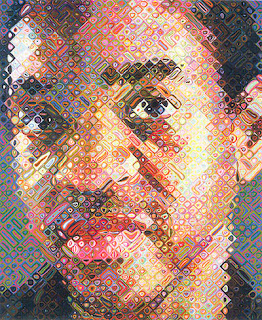After sketching, scholars began to lay down areas of color or washes to establish the basic shapes of their selected objects. Once the shapes were roughed out, the scholars went in and applied the tints and shades of their colors and added specific details such as highlights, reflections and additional shadows. Each scholars utilized the various painting techniques taht appealed to them. Some of those techniques observed were wet on wet and wet on dry techniques, dry brush, creating a wash, "erasing" areas or mopping up areas of color with their brush.
ACEART007
Empowering creative thinkers and problem solvers to express themselves
Tuesday, February 14, 2012
Watercolor Still Life Paintings
After scholars completed their color wheel studies, scholars applied their knowledge of color science and mixing colors and created a rough sketch or study of a still life. Scholars studied "grounds" (Foreground, Middle-Ground and Background) or spacial arrangements and applied that additional knowledge to their still life compositions. Scholars selected two or three still life objects and arranged their own individual still life arrangements and sketched what they observed.
After sketching, scholars began to lay down areas of color or washes to establish the basic shapes of their selected objects. Once the shapes were roughed out, the scholars went in and applied the tints and shades of their colors and added specific details such as highlights, reflections and additional shadows. Each scholars utilized the various painting techniques taht appealed to them. Some of those techniques observed were wet on wet and wet on dry techniques, dry brush, creating a wash, "erasing" areas or mopping up areas of color with their brush.
After sketching, scholars began to lay down areas of color or washes to establish the basic shapes of their selected objects. Once the shapes were roughed out, the scholars went in and applied the tints and shades of their colors and added specific details such as highlights, reflections and additional shadows. Each scholars utilized the various painting techniques taht appealed to them. Some of those techniques observed were wet on wet and wet on dry techniques, dry brush, creating a wash, "erasing" areas or mopping up areas of color with their brush.
Science of Color
Scholars recently wrapped up designing color wheel studies. Each scholar was given a predetermined size of watercolor paper and a compass. Scholars were instructed to find the center of their paper, then create a circle measuring 10 inches in DIAMETER using the appropriate RADIUS. Once scholars completed that, they were asked to create arcs using the given radius and use the 4 BISECTING points in their circle. Once scholars completed all of their ARCS, they ended up with 12 leaf or spear head shapes. Scholars chose where their PRIMARY COLORS should be located and then completed the color wheel by mixing their primaries into SECONDARY COLORS and then mixing their primary and secondary colors to create TERTIARY COLORS. Each of the individual artworks looks similar but to complete the wheel, any additional "empty" areas were to be filled in with color and the scholar could use any type of color theory they wanted to finish the wheel. The last remaining objective was that each scholar was to select one HUE and create a value scale and create TINTS and SHADES of that hue.
Friday, January 27, 2012
Students in study
Scholars are finishing their paintings of still life objects and then moving on to creating studies of facial features, starting with the eyes. In class students are given a sheet of examples to study off of, a demonstration of how to draw the eye with explanations of the various parts of the eye is given, and then scholars use the handout, mirrors and peers at their table to create their own studies or sketches of eyes.
Learning from the past and artists working today
With each assignment my students are introduced to an artist. Some of the artists we study come from history. We have studied artists such as Pablo Picasso, Georgia O'Keeffe, John Biggers, Jacob Lawrence. We also draw inspiration from today's working artists such as Deborah Butterfield, Chuck Close, Phil Hansen, and others. Below are examples of some of their work.
 |
| Butterfield, Ferdinand |
 |
| Butterfield |
 |
| Pablo Picasso |
 |
| Picasso |
 |
| Chuck Close |
 |
| Close, working in studio |
 |
| Phil Hansen |
 |
| Hansen |
Subscribe to:
Comments (Atom)

















